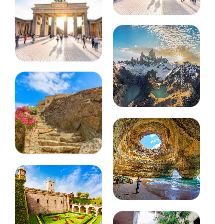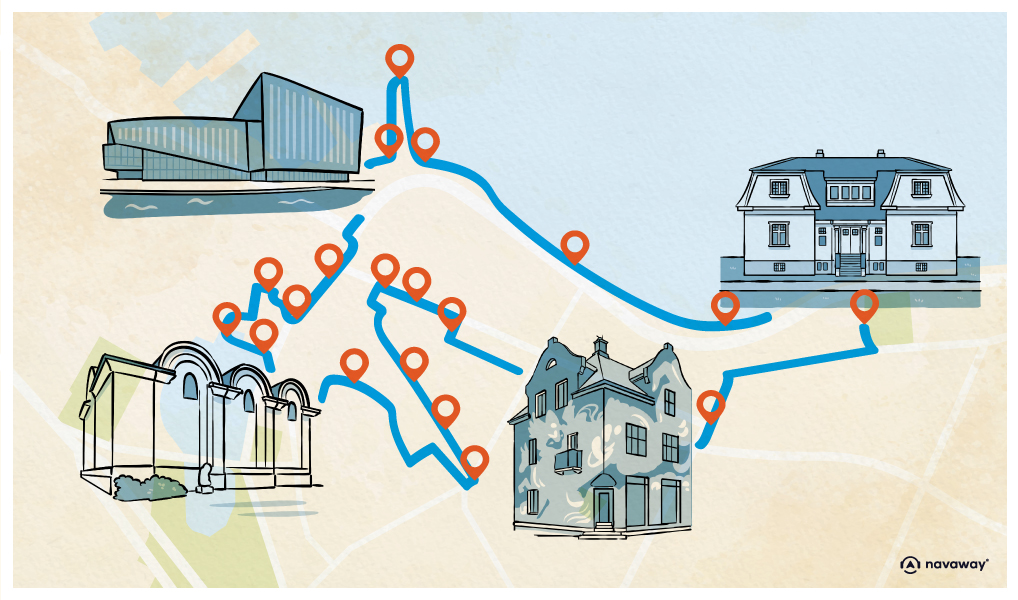
The 10 best places to see the Northern Lights in Iceland
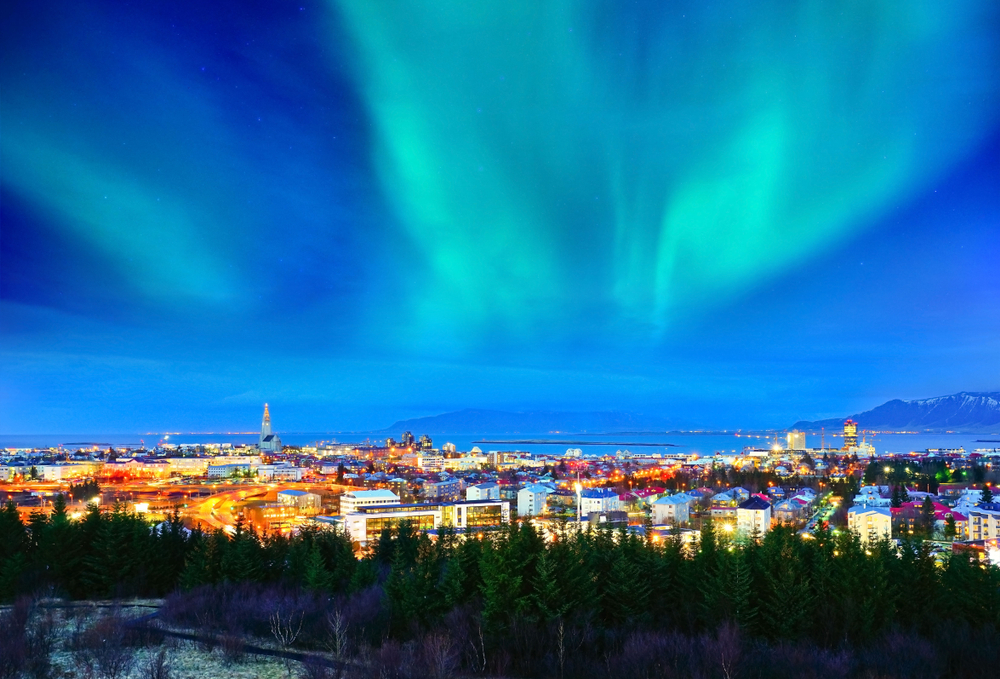
Iceland, that mysterious island in the heart of the North Atlantic, offers one of the most magical natural spectacles in the world: the Northern Lights. These drapes of light dancing across the dark sky create an unforgettable spectacle for anyone lucky enough to catch a glimpse. If you dream of admiring these extraordinary light phenomena, discover our selection of the 10 best spots to watch the Northern Lights in Iceland and enjoy a unique experience under the northern skies.

See also the Reykjavik guide :
- Visiting Reykjavik in 1 day: 20 things to do and see on foot
- Top 5 things to do in Reykjavik
- When is the best time to visit Iceland?
- Top 10 culinary specialities in Reykjavik
1. Reykjavik and the surrounding area: the capital of a thousand opportunities
Paradoxically, visiting Reykjavik can offer great opportunities for observing the Northern Lights, despite the city’s light pollution. Iceland’s capital, with its 130,000 inhabitants, is still small enough to make it easy to escape to darker areas.
The most popular spots are in Álftanes, just a 15-minute drive from the capital. This small coastal town offers an excellent compromise between accessibility and dark skies. Photographers regularly head here to capture the Northern Lights dancing above the Reykjavik skyline.
Download the audio tour to discover Reykjavik on foot and on your own
Explore Iceland’s capital with our audio tour of Reykjavik, which will take you to 20 must-see places of interest. From the famous Hallgrimskirkja church to the Sólfar sculpture and the Harpa cultural centre, discover all the secrets of this fascinating Nordic capital with our fun and informative audio guides.
2. Jökulsárlón: the glacial lagoon with its magical icebergs
Located in south-east Iceland, the glacial lagoon of Jökulsárlón is undoubtedly one of the most spectacular spots for observing the Northern Lights in Iceland. This extraordinary lagoon, dotted with floating icebergs from the Breiðamerkurjökull glacier, provides an absolutely unique backdrop for this natural phenomenon.
The contrast between the turquoise waters, the glistening icebergs and the luminous curtains of the aurora creates a breathtaking spectacle. The reflection of the aurora on the calm surface of the lagoon and on the icebergs adds a fairytale dimension to the experience. The colonies of seals that frequent the lagoon add a wild note to this exceptional night-time observation.
3. The black sandy beach at Vík í Mýrdal
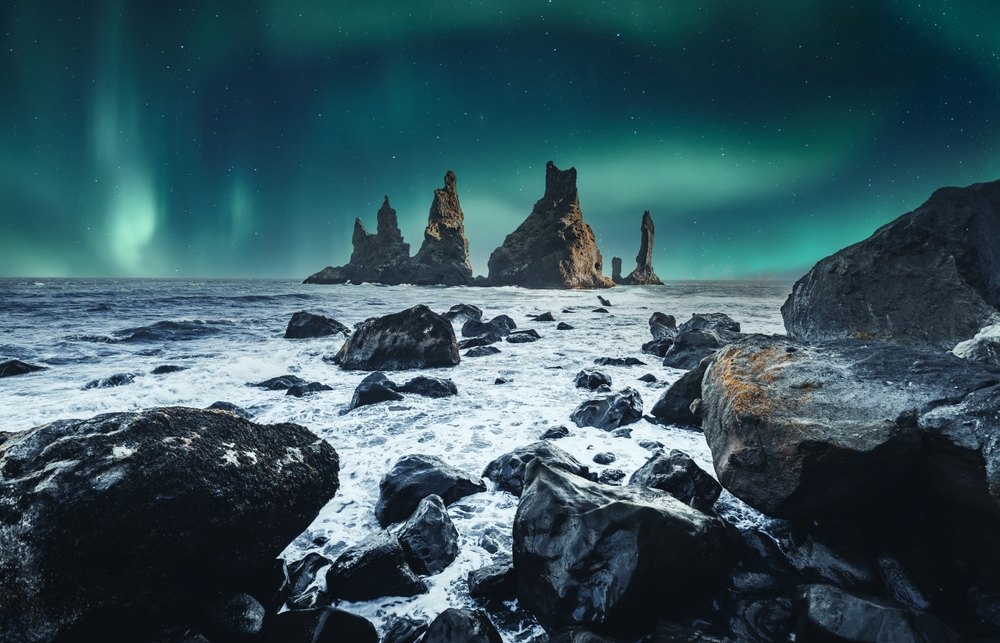
The small village of Vík í Mýrdal, located on Iceland’s south coast at the foot of the Mýrdalsjökull glacier, is home to one of the country’s most photographed beaches. Its volcanic black sand beach, fringed by spectacular rock formations, provides an exceptional natural backdrop for observing the Northern Lights.
The absence of light pollution and the vastness of the Atlantic Ocean provide the perfect clear horizon for contemplating the aurora. The striking contrast between the black sand, the basalt rocks and the coloured glow of the night sky creates unique photographic conditions. Couples will find this a particularly romantic setting, accompanied by the gentle lapping of the waves in the background.
4. The Snæfellsnes Peninsula: Iceland in miniature
Nicknamed “Iceland in miniature”, the Snæfellsnes peninsula packs all the island’s typical landscapes into a small area. Dominated by the Snæfellsjökull volcano, crowned by its glacier and made famous by Jules Verne in “Journey to the Centre of the Earth”, this region offers ideal conditions for observing the Northern Lights.
Snæfellsjökull National Park provides protection from light pollution, while the diversity of landscapes – fjords, cliffs, lava fields, beaches – offers a wealth of opportunities for photographic compositions. The iconic mountain of Kirkjufell, with its distinctive pyramid shape, provides a spectacular foreground for capturing the aurora.
5. The port of Borgarnes: Nordic charm and guaranteed aurora
Located in the west of Iceland, the charming port of Borgarnes is ideally placed for observing the Northern Lights. This region enjoys longer nights and often milder weather than the south of the country, with less cloud cover.
The small fishing port, with its traditional boats moored in the bay, offers an authentic Icelandic setting for contemplating the aurora. The reflections of the coloured lights on the calm water of the fjord and on the hulls of the ships create a magical atmosphere. The sparse population of the region ensures minimal light pollution, ideal for astronomical observation.
6. Landmannalaugar: hot baths under the stars
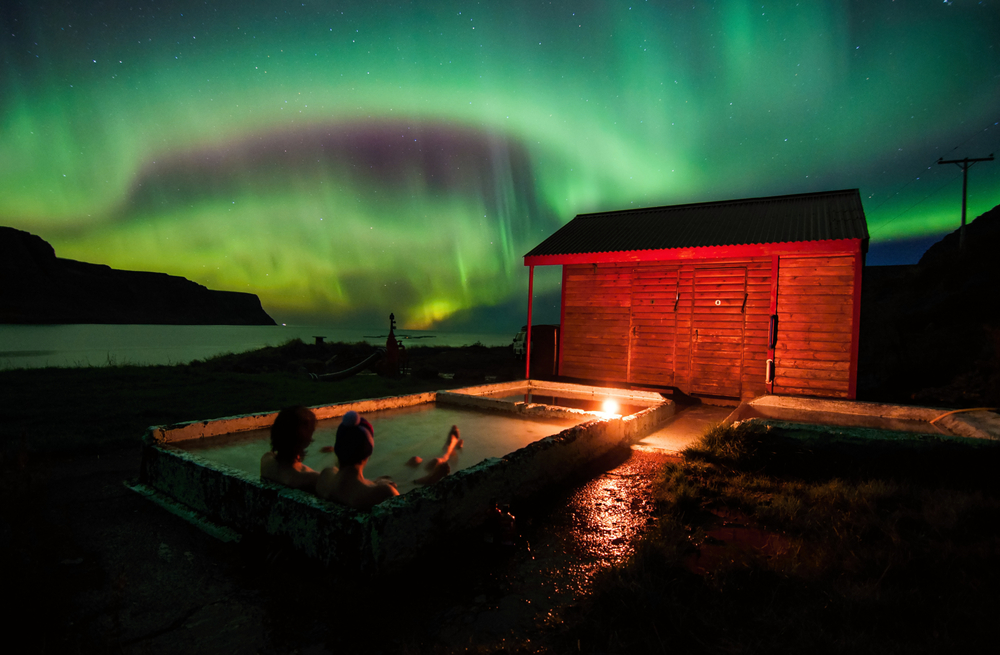
The volcanic region of Landmannalaugar, whose name means “the hot baths of the locals”, offers a unique experience: watching the Northern Lights while basking in natural hot springs. These geothermal pools, heated to around 40°C by volcanic activity, allow you to enjoy the celestial spectacle in comfort, even in freezing temperatures.
The spectacular landscapes sculpted by lava flows, with their mountains of shimmering colours – red, yellow and green – provide a surreal backdrop for aurora-watching. Although access is difficult in winter, this destination rewards the most adventurous with an absolutely unforgettable experience, combining thermal relaxation and astronomical contemplation.
7. Akureyri: the capital of northern Iceland
Akureyri, nicknamed the “capital of the north”, enjoys an exceptional geographical position at the end of the Eyjafjörður fjord. This town of 18,000 inhabitants, Iceland’s second largest, offers excellent conditions for observing the Northern Lights thanks to its northern location.
The northern part of the country enjoys longer nights in winter and virtually no light pollution outside the city centre. The surrounding hills offer numerous elevated vantage points from which to admire the aurora dancing over the fjord. The local community is particularly welcoming and happy to share tips on how to make the most of this extraordinary natural phenomenon.
8. The Reykjanes peninsula: just outside the airport
The Reykjanes peninsula, less than 30 kilometres west of Reykjavik, has the advantage of being easily accessible as soon as you arrive in Iceland, as it is home to Keflavík international airport. This proximity makes it the ideal spot for a first observation of the Northern Lights.
Moving away from populated areas, the peninsula offers wilderness unspoilt by light pollution. The lunar landscapes, shaped by recent volcanic activity, create a dramatic backdrop for aurora viewing. Black lava fields, hot springs and spectacular rock formations add a mystical dimension to the night-time experience.
9. Skógafoss waterfall and surrounding area
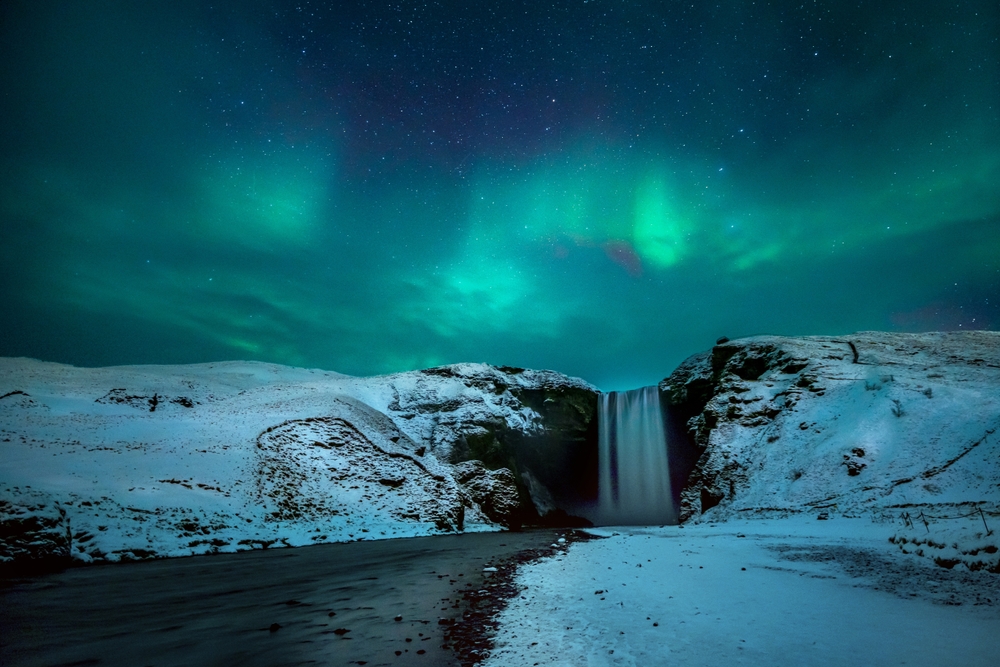
The majestic Skógafoss waterfall, over 60 metres high, is one of Iceland’s most emblematic sites. Located on the Skógá River in the south of the country, it provides a spectacular backdrop for observing the Northern Lights. The waterfall, sometimes illuminated by the moon, creates a striking contrast with the luminous curtains of the aurora.
The area around Skógafoss, free from urban light pollution, offers excellent visibility of astronomical phenomena. Photographers particularly appreciate this site for the diversity of possible compositions, combining the power of moving water with the ethereal grace of the northern lights. The proximity of the Landmannalaugar volcanic region adds a fascinating geological dimension to the observation.
10. Hvolsvöllur: a photographer’s paradise
Located in the south-west of Iceland, the Hvolsvöllur region has become a must for fans of northern lights photography. Renowned for its breathtaking scenery, the area has also been used as a backdrop for numerous international films and music videos, as its natural scenery seems so unreal.
The region’s spectacular waterfalls, notably Seljalandsfoss and Gljúfrabúi, offer exceptional foregrounds from which to capture the Northern Lights. The water spilling gracefully from the cliffs creates a poetic contrast with the fluid movements of the celestial lights. The diversity of vantage points available in this area makes it an ideal playground for photographers in search of the perfect shot.
In conclusion, Iceland offers a multitude of exceptional spots to observe the Northern Lights, each with its own specific characteristics and advantages. Whether you choose the ease of access from Reykjavik, the rugged isolation of Landmannalaugar or the dramatic beauty of Jökulsárlón, the island of fire and ice guarantees unforgettable memories under its starry skies. Don’t forget to download our audio tour to discover all the secrets of Iceland’s capital during your stay.
Frequently asked questions
When is the best time to see the Northern Lights in Iceland?
The Northern Lights can be seen in Iceland from the end of August to mid-April, with an optimal period between September and March. October, November, February and March generally offer the best viewing conditions, with sufficiently long, dark nights.
What time should I watch the Northern Lights?
The Northern Lights are most often visible between 9pm and 2am, with a peak of activity around 11pm-1am. It is important to wait until it is completely dark and to check the auroral activity forecasts before going out to observe.
Do you have to travel far from Reykjavik to see the aurora?
Although it is possible to see the aurora from certain parts of Reykjavik during periods of high activity, it is advisable to stay 15-30 minutes away from the capital to reduce light pollution. Spots such as Álftanes and the Reykjanes peninsula offer excellent viewing conditions close to the city.
What equipment should you bring to observe the Northern Lights?
Bring warm, waterproof clothing, non-slip footwear, a headlamp with a red filter, a folding chair or floor mat, hot drinks in a thermos, and for photography: a camera with manual mode, a stable tripod and spare batteries (the cold quickly discharges them).
200 audioguided tours for cities all around the world
Download